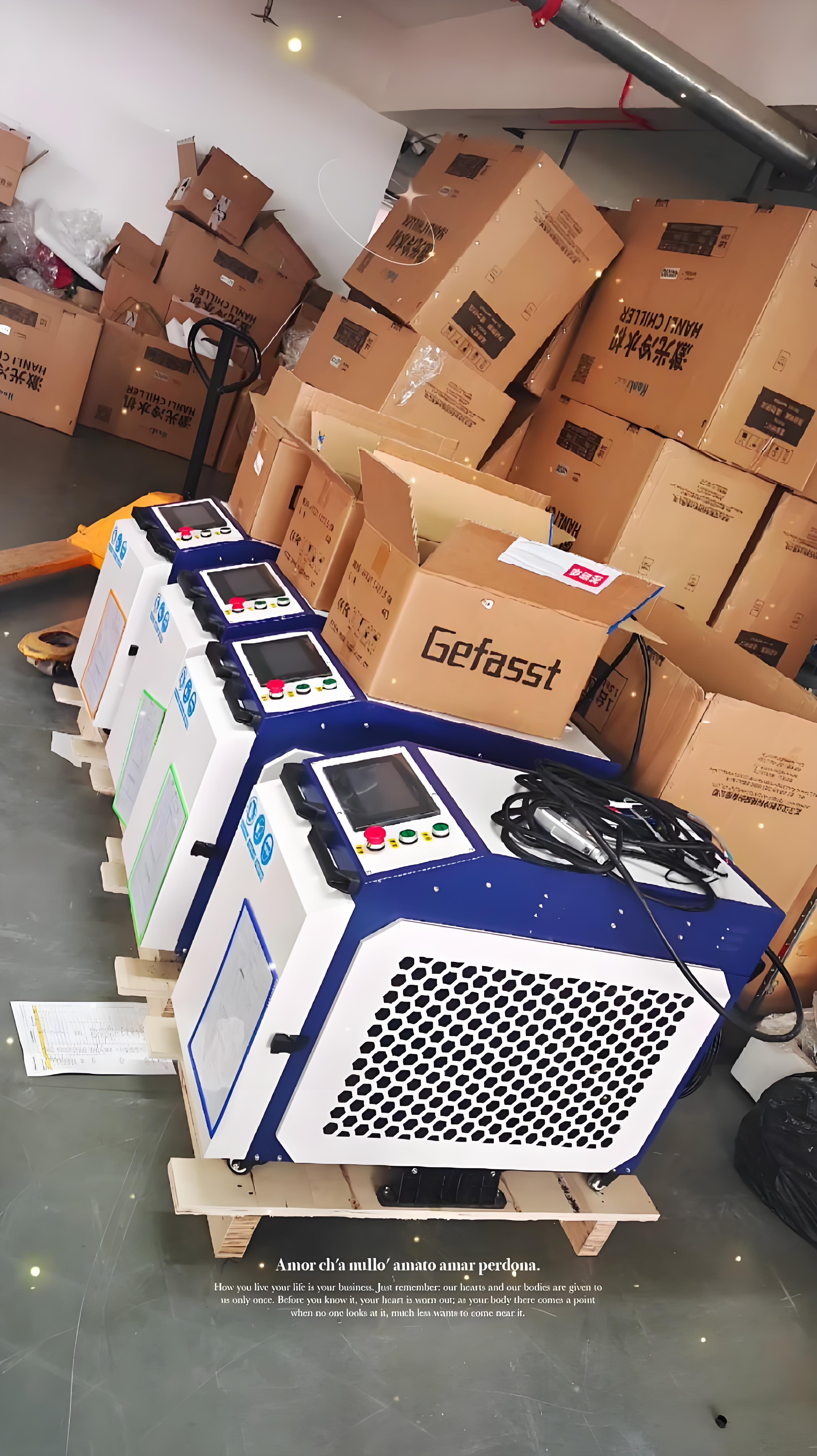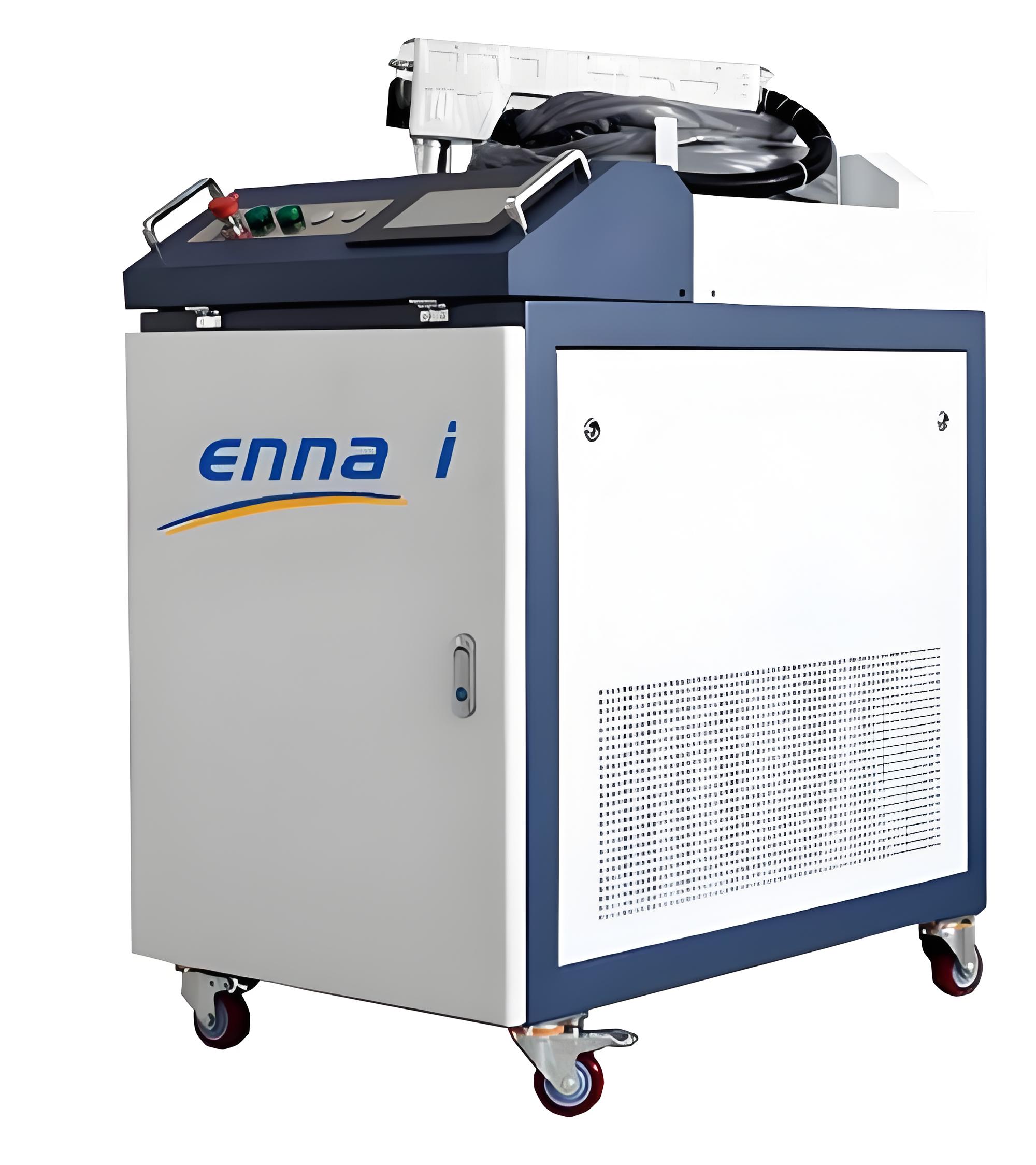With nearly two decades in the metal surface treatment industry, I’ve worked with every rust removal method under the sun, from gritty sandpaper to high-tech lasers. Lately, laser rust removal machines have gained popularity for their efficiency and eco-friendly appeal, making them a go-to for homes, workshops, and industrial settings. But one question keeps popping up: Do laser rust removal machines require a lot of consumables? Consumable costs are a big factor in long-term affordability. Drawing on my hands-on experience and industry knowledge, I’ll break down the consumable situation, explore running costs, use cases, and share tips to minimize expenses, helping you decide if this tool fits your needs.

Consumables in Laser Rust Removal Machines
Laser rust removal machines work by directing a high-energy laser beam onto metal surfaces, vaporizing or stripping away rust, grease, or coatings via a photothermal effect. Unlike traditional methods like sandblasting or chemical cleaning, one of their biggest selling points is near-zero consumables. They rely primarily on electricity to power the laser and cooling system, without the need for abrasives, chemicals, or grinding tools.
My first encounter with a laser rust removal machine was at a car restoration workshop, where a friend used a 100W unit to clean a rusty car frame. The process used no sandpaper or chemicals—just a bit of electricity and minimal upkeep. This got me hooked on the low-consumable potential, though I later learned there are a few nuances to consider, like maintenance and occasional part replacements.
What “Consumables” Are Involved?
While laser rust removal is often touted as “consumable-free,” there are some indirect costs or components that may need periodic replacement. Here’s what I’ve identified as the main “consumables” or related expenses:
Electricity: The primary energy source, with machine power ranging from 20W to 1000W. Home or portable units (50W-200W) consume about 0.1-0.3 kWh per hour, keeping electricity costs low.
Protective Gear: Lasers pose risks to eyes and skin, so specialized protective goggles are essential, often included with the machine but may need replacement after heavy use, costing $7-$30.
Cooling System Maintenance: Some machines use water or air cooling. Water-cooled units may require coolant refills (about $7-$15 annually), while air-cooled models have virtually no such costs.
Laser Head Lens: The lens can wear out due to prolonged use or improper handling (e.g., not cleaning metal dust), requiring replacement every 1-2 years at $30-$150.
Miscellaneous Parts: Items like cables or switches may need occasional replacement due to wear or accidents, but these are cheap, typically under $15.
Compared to traditional methods—like sandblasting, which requires constant abrasive purchases, or chemical cleaning, which needs rust removers—laser rust removal’s consumable costs are practically negligible. Over two years with my 100W portable unit, I’ve spent only on electricity and one lens replacement, totaling under $70.

My Real-World Experience
To give you a clearer picture, here are a few real-life examples from my use of laser rust removal machines.
Case 1: Home Use
My backyard shed was full of rusty garden tools—shovels, rakes, you name it. Last year, I bought a 50W portable laser rust removal machine for about $550. Cleaning these tools used only electricity, with each 20-minute session costing less than $0.15 in power. After six months, I noticed dust buildup on the laser lens, but a quick wipe kept it in top shape, and I’ve spent zero on consumables so far. The process was clean and quiet, a far cry from the mess of sandpaper or chemicals.
Case 2: Small Workshop
A friend runs a small metal restoration shop, refurbishing used tools. He uses a 200W laser rust removal machine for 4-5 hours daily. Over two years, his only costs were electricity (about $15/month) and one coolant refill ($7). Compared to his old sandblasting setup, which cost $70-$110 monthly in abrasives, the laser’s minimal consumables saved him a bundle.
Case 3: A Costly Mistake
Once, I tried cleaning a greasy metal part without degreasing it first, and the laser lens got splattered with residue, reducing its effectiveness. I ended up spending $45 on a new lens. This taught me that proper operation and maintenance can keep consumable costs even lower.
Consumable Cost Comparison Table
To illustrate the consumable situation, I’ve compared laser rust removal with traditional methods (sandblasting and chemical cleaning):
| Method | Main Consumables | Cost per Use | Long-Term Maintenance | Best Use Case |
|---|---|---|---|---|
| Laser Rust Removal | Electricity, goggles, lens, coolant | Electricity: $0.07-$0.30 | Lens replacement ($30-$150/1-2 yrs) | Home DIY, small workshops, precision parts |
| Sandblasting | Abrasives (sand, steel shot), protective gear | Abrasives: $1.50-$7 | Nozzle wear ($15-$70/6 months) | Large industrial projects, heavy rust |
| Chemical Cleaning | Rust remover, gloves, waste disposal | Chemicals: $0.70-$3 | Waste disposal ($7-$30/use) | Small-scale, light rust |
The table shows that laser rust removal’s consumable costs are minimal, mainly electricity and rare part replacements, while sandblasting and chemical cleaning rack up ongoing expenses, especially with frequent use.
Tips to Optimize Consumable Costs
While laser rust removal machines already have low consumable costs, these tips can help you save even more:
Choose the Right Power: Pick a 50W-100W unit for home use to avoid the higher electricity costs of high-power models.
Clean the Lens Regularly: Wipe the laser head lens with a specialized cloth after each use to prevent dust or splatter buildup, extending its lifespan.
Prep Surfaces Properly: Degrease oily or coated parts before lasering to protect the lens and reduce maintenance needs.
Opt for Air-Cooled Models: For home use, choose air-cooled machines to avoid coolant refill costs associated with water-cooled units.
Buy from Reputable Brands: Brands like Raycus or JPT offer durable components, reducing replacement frequency and costs.
I’ve made it a habit to clean my machine’s lens after every session, and it’s still in great condition, saving me from unnecessary replacements.

Long-Term Cost Analysis
To put consumable costs in perspective, let’s estimate annual costs for a small workshop cleaning 50 metal parts monthly:
Laser Rust Removal: Machine purchase ($700), electricity (0.2 kWh/part × 50 parts × 12 months × $0.15/kWh = $18), lens replacement ($45/year), total ~$763 (first year, $63 thereafter).
Sandblasting: Machine purchase ($300), abrasives ($3/part × 50 parts × 12 months = $1,800), nozzle maintenance ($45/year), total ~$2,145/year.
Chemical Cleaning: No machine cost, chemicals ($1.50/part × 50 parts × 12 months = $900), waste disposal ($15/use × 12 = $180), total ~$1,080/year.
Laser rust removal’s upfront cost is higher, but from year two onward, consumable costs are nearly nonexistent, making it far more economical for frequent use. Sandblasting and chemical cleaning costs pile up with ongoing consumable purchases.
Operational and Safety Considerations
While consumables are minimal, proper use and maintenance are key to keeping costs down:
Wear Protective Goggles: Lasers can cause serious eye damage; use wavelength-specific goggles ($7-$30), and check for wear regularly.
Keep Equipment Clean: Wipe down the machine and laser head after use to prevent dust buildup that could affect performance.
Avoid Improper Use: Don’t laser greasy or heavily coated surfaces directly, as this can damage the lens.
Check Cooling Systems: For water-cooled units, ensure coolant levels are adequate; for air-cooled, verify fan functionality annually.
My $45 lens replacement was a wake-up call—routine maintenance is critical to minimizing consumable costs.
Future Trends in Laser Rust Removal
The industry is moving fast, with newer laser rust removal machines focusing on lower energy use and smart features like auto-focus and app-based controls, which reduce operator errors and maintenance needs. Some brands are also developing more durable lenses, further cutting replacement frequency.
As production scales up, machine prices are dropping. I predict that within 3-5 years, home-use models could cost as little as $150-$300, with consumable costs shrinking even further, making them accessible to more users.

Conclusion: Are Consumables a Big Deal?
Laser rust removal machines have remarkably low consumable costs, with expenses limited to electricity and occasional part replacements like lenses or coolant. Compared to sandblasting’s abrasive costs or chemical cleaning’s ongoing chemical purchases, laser rust removal is a clear winner for frequent rust removal or eco-conscious settings, such as home DIY projects, small workshops, or precision part cleaning.
For me, my laser rust removal machine is a hassle-free partner, tackling metal cleaning with minimal fuss and no consumable headaches. If you’re thinking about getting one, consider your usage frequency and budget, and prioritize proper maintenance to keep costs low. A tool’s true value lies in how much it simplifies your work, and in that regard, laser rust removal is a cost-saving champion.
Frequently Asked Questions
1. Are laser rust removal machines completely consumable-free?
Not entirely, but close. They mainly use electricity, with minor costs for occasional lens replacements ($30-$150 every 1-2 years) or coolant refills ($7-$15/year).
2. Is the electricity cost high for laser rust removal machines?
For 50W-100W home units, electricity use is about 0.1-0.2 kWh per hour, costing $0.07-$0.30 per use at $0.15/kWh—very affordable.
3. How can I extend the lifespan of the laser lens?
Wipe the lens with a specialized cloth after each use to prevent dust or splatter buildup. Pre-clean greasy parts with a degreaser to avoid lens damage.
4. Is maintaining a laser rust removal machine complicated?
It’s straightforward—clean the laser head regularly and check the cooling system annually. Air-cooled models need almost no extra maintenance, while water-cooled units require yearly coolant checks.
5. Are laser rust removal machines suitable for home use?
Absolutely, especially for DIYers or small workshops. Their low consumable costs, eco-friendliness, and ease of use make them perfect for home settings.






